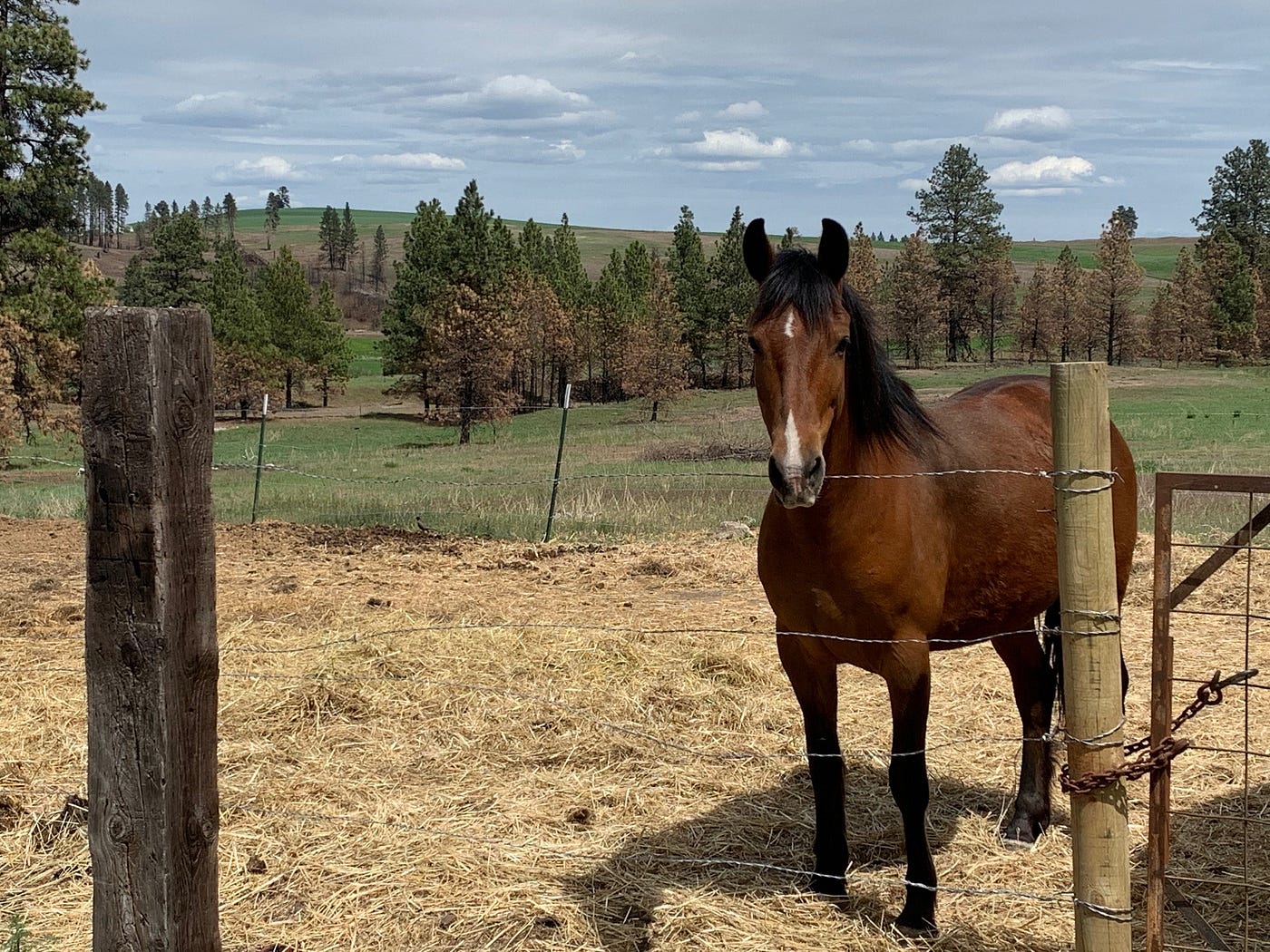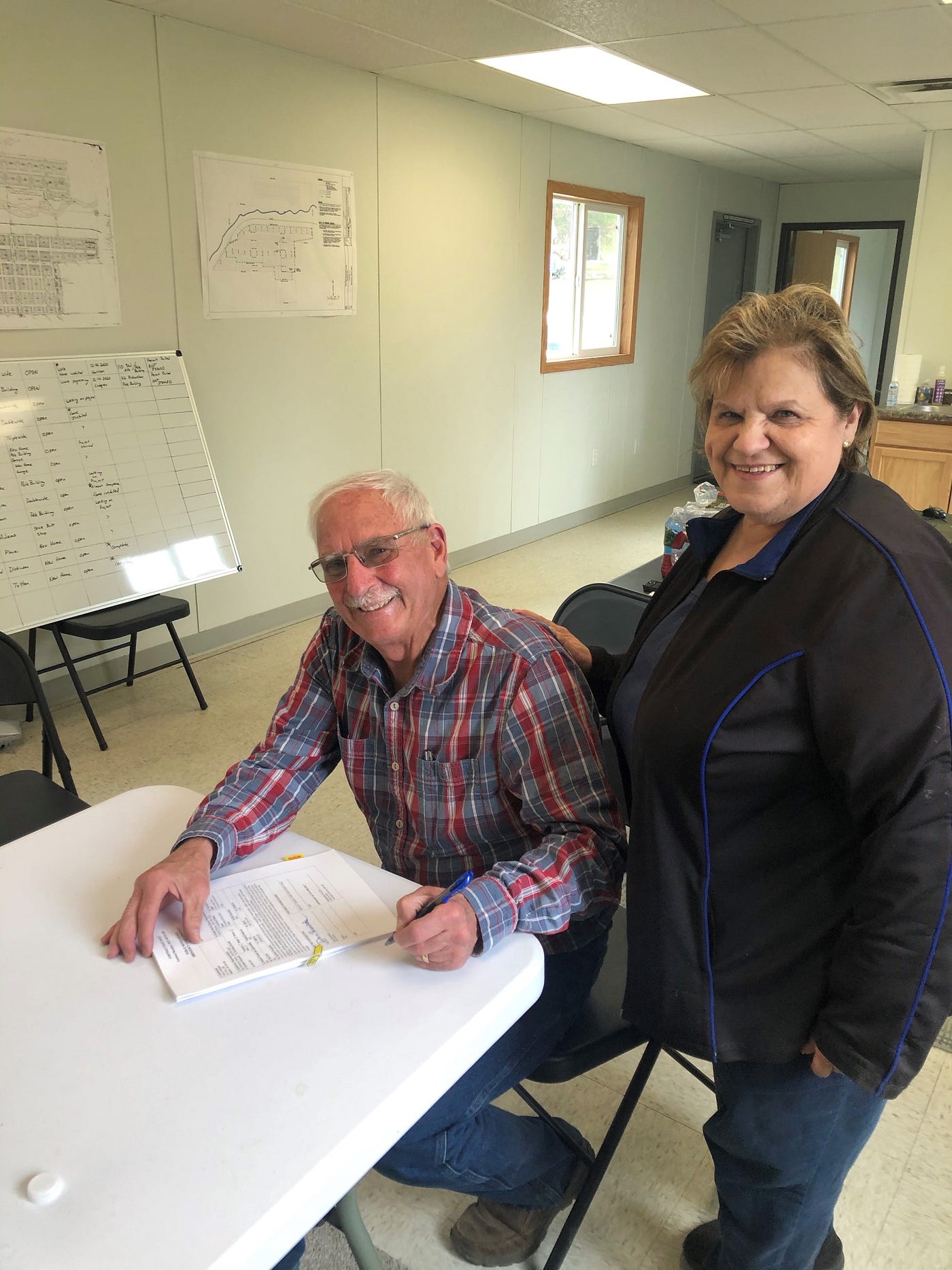Commerce work with local leaders in town decimated by wildfire reveals new approaches to better serve communities in crisis
Imagine feeling the scorching heat as you stand, stranded on the nearest small patch of green alfalfa, helpless against flames consuming the house on your family’s homestead settled generations ago. Or feeling a tightening knot in the pit of your stomach as you rush to the engulfed homes and businesses of your neighbors, making sure everyone is safe from the wildfire swallowing buildings whole. Imagine, then immediately shifting gears to lead rebuilding the devastated community, all while your own family is among those who lost everything.
That was reality for the current town mayor Dan Harwood and volunteer firefighter and town councilmember Scott Hokonson last September when the Babb Road fire roared through the rural town of Malden, Washington and destroyed 80 percent of its homes and buildings in a matter of hours. The small community of fewer than 300 residents sits among the rolling hills and fields of Washington’s Palouse, about 40 miles south of Spokane.

Harwood, Hokonson and other local leaders and teams of dedicated individuals, have been working nonstop in their efforts to rebuild and come back even stronger. That effort has also challenged state agencies to rethink what it means to serve a community in crisis.
Community needs run the gamut, small to large, simple to complex
Immediate needs following a disaster are typically clear — food, shelter, water, communication and power restoration. Then what? What about the future? The extent of the damage in the community was near total, requiring extensive ongoing long-term recovery assistance.
For months, the president’s approval for a federal disaster declaration was delayed in Washington DC, leaving the entire community wondering if or when they could access recovery funds and resources for the town and its families and businesses. This put even more pressure on state and local government agencies, led by the state’s Emergency Management Division and Commerce’s Energy Emergency Management Director, to mobilize crisis response and support for the residents of Malden and neighboring Pine City.
Following the initial wildfire response, as the community looks towards recovery, Commerce Director Lisa Brown said the first step is simple but frequently overlooked — listening. She said all too often, well-meaning agencies show up to the rescue with a standard toolkit of services and funding in hand. Communities are unique, and this one-size-fits-all solution isn’t always what a community actually needs.
“Plenty of people are willing to step up and help, but coordination is the heavy lift,” said Commerce Director Lisa Brown. “We were able to embed with the community and listen carefully to their needs. Sorting out the processes for getting what they need is something local leaders very often just don’t have the capacity to track down and do in the midst of such chaos.”
Connections more important than funding
Commerce’s Community Engagement Team arrived in Malden and met with local leaders led by Mayor Harwood and Hokonson in his role as Long-term Recovery Project Director.
“It’s important to build the relationship — one-way communication is not what they need,” said Commerce’s Community Outreach Specialist Julia Havens who serves in the northeastern part of the state. “We didn’t come in with pre-conceived notions and try to do things right away. We started slow and kept showing up.”
With such overwhelming needs, it became clear that the question of “what can I do to be helpful” would keep changing.
Hokonson expressed that the community “will take whatever you have to offer, whenever you’re ready to offer it.”
Helping the local recovery leadership team map and track their myriad needs and then organize around finding the right resources was key. Small town leaders wear multiple hats under normal circumstances, so the strain in a situation like this is overwhelming. Commerce brought together “tech teams” to address everything from housing to broadband to water infrastructure with inter-agency partners.
Some needs, such as emergency housing and communications, were straightforward. Shortly after the fire, Commerce’s Community Services and Housing Division identified funds for emergency rental assistance, and the Washington Broadband Office jumped in to negotiate with private internet service providers to get and keep the community connected.
Other essential needs continue to pop up daily amid the destruction.
When the call came “we need highway signs,” Commerce connected the town with regional transportation officials to take the lead.
Every small victory keeps the team encouraged.
“They will have a replacement flag at the post office, a new outgoing mailbox installed and now a new nearby post office is in the works. These wins help the community realize the sense of place and they matter,” recalls Havens.
Rebuilding for resilience — planning ahead to be prepared
Dozens of federal and state agencies, nonprofit and faith-based organizations and other groups have come to the table to help strengthen the community. One of those organizations is the Washington State Public Works Board, a leading member of the infrastructure “tech team” of experts involved in the ongoing recovery work.
Malden’s water system had been severely damaged in the fire, and private wells in the community were contaminated by ash and debris.
The Public Works Board was able to use its statutory flexibility to adopt a new policy to expand the funding limit of its emergency program in the case of catastrophic events, and took action to do so at their April meeting. This new policy also provided the Board with latitude to approve up to 100% grant funding to requests meeting this criteria.
As a result, Malden applied for $3.7 million in grant funding to drill a new town well, connect the private wells that had been contaminated to the system, and install additional water mains and fire hydrants to provide and increase fire protection. The board awarded full funding on May 7, Mayor Harwood signed the contract days later, and the required review processes began the next day. Completion of this project will ensure adequate water resources, public health and safety, preserve property values and support economic revitalization.
Public Works Board Chair Kathryn Gardow said, “The measure of any community is the way it handles adversity. Few towns have been tested as harshly as Malden, and their resolve and passion to rebuild after this devastating fire is clear. The Public Works Board is proud to stand with the town of Malden as it rebuilds and transitions to a brighter future and look forward to seeing Malden rebuilt better than ever.”
One wrinkle in the funding remained. In order for the funding to be used, state law requires the municipality to have an updated critical areas ordinance (CAO) in place. Malden’s CAO was last updated in 2007. Commerce connected its growth management services staff with town clerk Micki Harnois to work collaboratively on expedited completion of the new ordinance.
“Here’s an example of a government agency starting from ‘how can we make this happen’ when it could have been ‘you’re out of compliance.’ When you’re working to help a small, local community be successful, the approach has to be totally different,” Havens said.

Another consequence of the fire was that it destroyed the built and natural identifiers for land parcel boundaries. Parcel boundaries are crucial for property owners as they begin rebuilding, as well as the town and county for land use planning efforts. In February this year, Commerce provided a $55,000 grant to help Malden conduct a land survey and plan for integrating the data into their future plans, which was recently completed.
“It’s been my privilege to meet Mayor Harwood and Micki. It’s absolutely an honor to play a very small part in the recovery of Malden, not just to rebuild but to build back better,” said Commerce’s Local Government Division Director Mark Barkley, who deployed numerous team members to assist the town.
Once the request for federal disaster declaration came through 151 days later on February 4, FEMA assistance finally became available, opening a cascade of other resources that had been dependent on the federal designation. Property testing and cleanup is underway, but the list of priority infrastructure projects is long. Local leaders press on, supported by many offers of assistance from philanthropic, religious and other community partners in addition to federal and state partners.
Other long-term efforts underway include looking at affordable housing throughout the Pine Creek area. Commerce’s community services and housing staff are working with community leaders to form a low and moderate-income housing roundtable to identify resources to help address long-term needs and build community resilience for the future.
Lessons learned will guide change
Commerce team members remain engaged in various aspects of the community’s long-term recovery.
“We didn’t come in with pre-conceived notions and try to do things right away. We started slow and kept showing up.”
“We showed up and we stayed; we were there week after week,” said Brown.
Havens, who is embedded with the town and local long-term recovery teams, continues to attend and support daily and weekly coordination calls.
“I am inspired by those who have lost so much and yet are completely dedicated to keep moving forward. I am doing everything that I can to continue helping them get those wins,” she said.
Beyond the short-term satisfaction of helping neighbors in need, Brown said the agency gained important insights that will guide future action.
The experience raised a set of questions about helping the next community in crisis. What needs to be there, ready to go? What can be done proactively to ensure community resilience in the face of disaster?
For example, Brown notes restrictions on state funding is a challenge. “We learned there’s just not much flexible funding out there that allows us to come in and cross program or agency boundaries to get the community what they need. That’s something we’ll be exploring with legislators.”
Above all, the experience reinforced for Commerce’s entire team and their many partners that there is no substitute for the power of ongoing, trusted relationships to strengthen communities.
“We all work as a team. We’re now in full-blown recovery mode. Malden will be back and we’ll be back better.”

Harwood, who calls himself a “glass half full” guy, is upbeat about his community’s future, in spite of challenges still ahead for the residents of this small town who have experienced the double trauma of COVID-19 and wildfire in one short year.
In addition to completing clean up of nearly every property, construction of new water and large scale septic systems and acquisition of two new fire trucks, Harwood is bullish on opportunities that will come with the town’s future fiber-optic broadband infrastructure.
He likens the potential impact of broadband to that of rail coming to Malden in 1903. Once the Port of Whitman’s plan for connecting the community to high-speed internet is complete, Harwood envisions more folks opting for the slower pace, recreational opportunities and lower land prices of small town life in a beautiful place.
And for some who already call the town home, Harwood paints a picture of what it could mean. He thinks about training veterans struggling with PTSD to work from home, providing supplemental income, and more importantly, he said, bolstering a sometimes battered sense of self-worth.
Harwood is matter-of-fact: “Broadband changes lives.”
He also strikes a serious tone as he speaks about challenges still on the horizon, such as mental health capacity for people to be able to have a proper “debrief.” Neighbors need to talk with each other, he said, about what they went through and how they survived it, first the trauma of COVID and then the fire.
Havens and others continue to stand side-by-side with local leaders as they navigate these and other emerging needs on the road to recovery.
“Commerce is the one of the best kept secrets,” Harwood offered. “I can’t name them all, but these people are ingrained in Malden. I can’t say enough about what all the support means for our community.”





